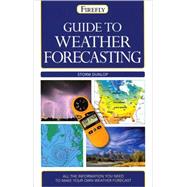
Storm Dunlop is a well-known authority on meteorology. He is the author of Practical Astronomy.
| The origins of weather | |
| The atmosphere and the global circulation | |
| The global circulation | |
| Winds and the Coriolis | |
| Effect Clouds | |
| Cloud forms | |
| Optical phenomena | |
| Sky and cloud colors | |
| Weather systems | |
| Local weather | |
| North American weather | |
| European and Mediterranean weather | |
| Weather over Australia and New Zealand | |
| Observing the weather | |
| Observing instruments, methods, and plotting | |
| Other observations | |
| Synoptic charts | |
| Professional forecasts | |
| Making a forecast | |
| Observing and photographing the sky | |
| Further information | |
| Glossary | |
| Index | |
| Acknowledgements | |
| Table of Contents provided by Publisher. All Rights Reserved. |
The New copy of this book will include any supplemental materials advertised. Please check the title of the book to determine if it should include any access cards, study guides, lab manuals, CDs, etc.
The Used, Rental and eBook copies of this book are not guaranteed to include any supplemental materials. Typically, only the book itself is included. This is true even if the title states it includes any access cards, study guides, lab manuals, CDs, etc.